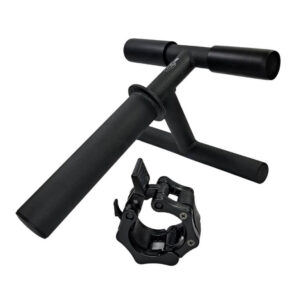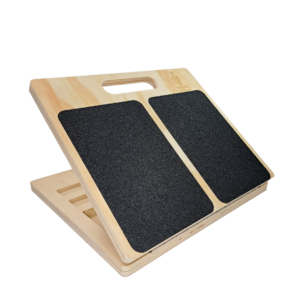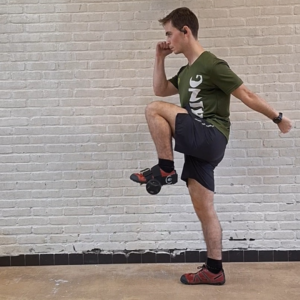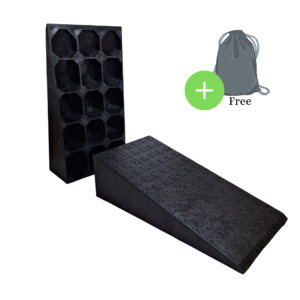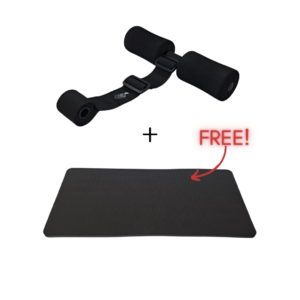
If you’re into Knees-Over-Toes exercising and you want to add an injury-prevention tool for your knees – look no further, because the Poliquin step up is (probably) the answer.
Poliquin step up may look innocent enough to the casual observer, but, if you ever tried it, you know how challenging it can be.
So, let’s take a close look at what Poliquin step up is, what are its benefits, how to perform it, and how to progress. Let’s dig in!
Table of Contents
SO, WHAT’S THE HYPE ABOUT?
If you never heard of Charles Poliquin, you’re missing out. This famous Canadian strength coach gave us all sorts of practical knowledge and exercises that are optimized both for strength and health.
One such tool was the step-up. In recent years, as the stigma around knees-over-toes began to fade, the Poliquin step-up found its place in a lot of exercise programs. It is a great way to target the vastus medialis oblique (VMO), which directly translates to stronger knees.
Speaking of…
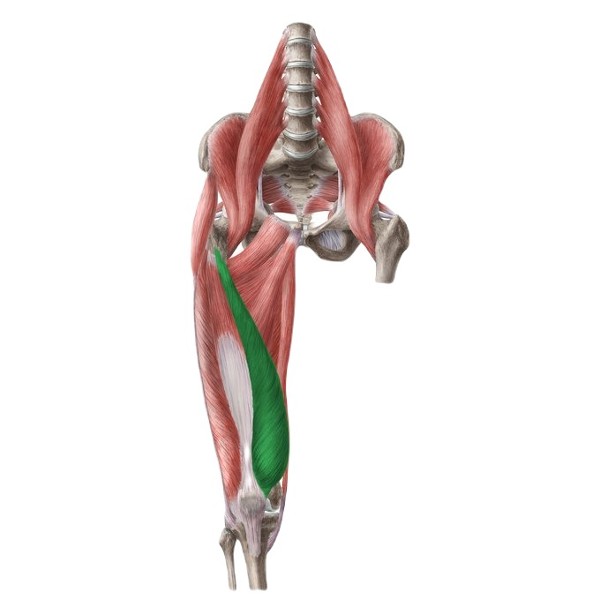
Poliquin step up benefits
It’s not that often that we can see an exercise that has so many benefits with such a short ROM. The most obvious one is the VMO gains, but that’s not all. Here are some of the main benefits of Poliquin step ups:
- Knee stability through VMO strength
- Low intensity and short ROM allow high volume – aka great for hypertrophy
- Core and hip stability – the unilateral nature of the movement helps with both
- Muscle imbalance correction which translates to virtually all other movements
- Tibialis anterior durability (on the non-working leg) as a side benefit
HOW TO PERFORM POLIQUIN STEP UPS
Since the movement is not that complicated by nature (it’s a step up), it’s best we talked through it by using cues:
- Start with a low slope on your slant board. Stand on it in a neutral stance.
- Raise your non-working leg from the slant board, but keep your hips square and your upper body tight and upright
- Push it forward while switching the weight to your working-leg knee (try to feel the VMO)
- Touch the ground with your heel and start ascending (the further forward you push, the better)
- While going up push through your working leg to step up
Don’t let the short ROM fool you. Repeat this for reps to increase the intensity and make sure you don’t break the working leg’s stability.
POLIQUIN PROGRESSIONS
There are several ways to progress the Poliquin step up once you master the regular version:
- Increase the angle on the slant board – the steeper the angle, the bigger the VMO focus
- Attach resistance bands to pull you down for progressive load
- Use a kettlebell or a dumbbell to add weight directly
- Elevate the slant board on a bumper plate or a small box. Don’t go too high because the chain activation will change and you’ll be more in the pistol squat territory
The Poliquin step-up is a part of a powerful injury-prevention trio, known as Patrick > Poliquin > Petersen progression. Make sure to check it out, especially if you have a slant board at your disposal.

BULLETPROOF YOUR KNEES WITH THE POLIQUIN STEP UP
All in all, this simple exercise offers great VMO-building possibilities. This will not only get you stronger knees, but stronger legs overall. Not to mention the balance improvement.
As a cherry on top, the low-intensity nature of the Poliquin step allows you to go for high-rep sets. Not a lot of exercises allow you to build strength, achieve hypertrophy, and bulletproof your knees at the same time.
What are you waiting for? Start doing Poliquin step-ups on your next leg day!
Don't wait for injuries to happen - get the best knees over toes gear in eu:
Above all, a storyteller. Then comes marketing, branding, writing music, powerlifting, and woodworking.


